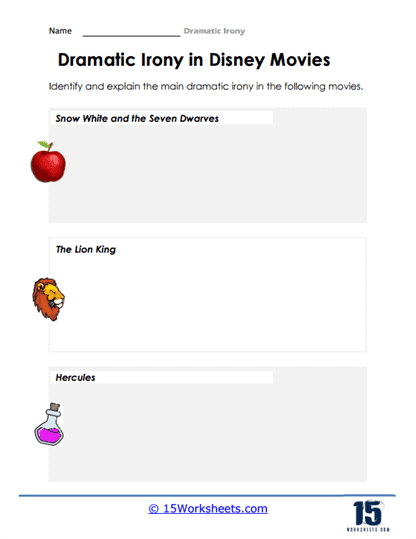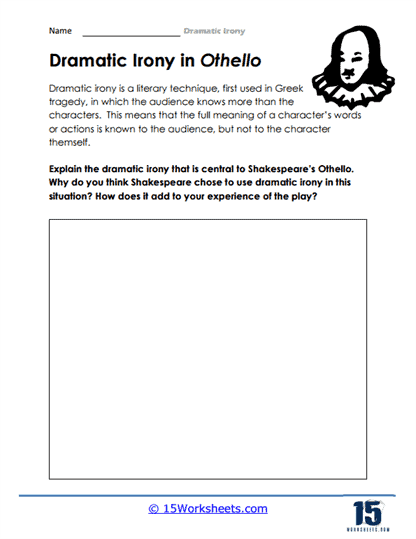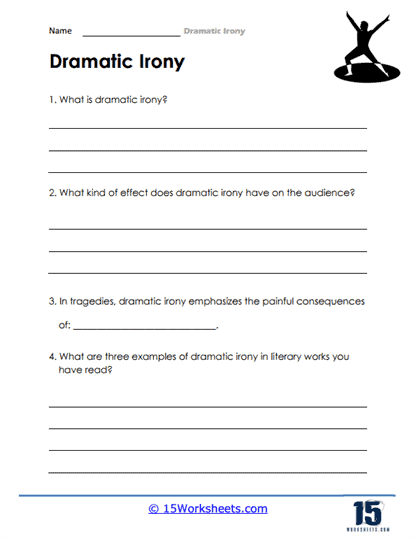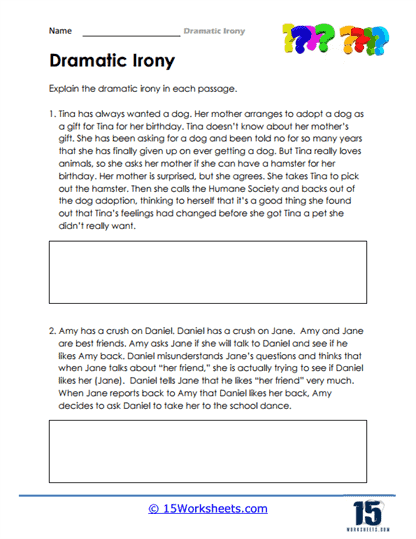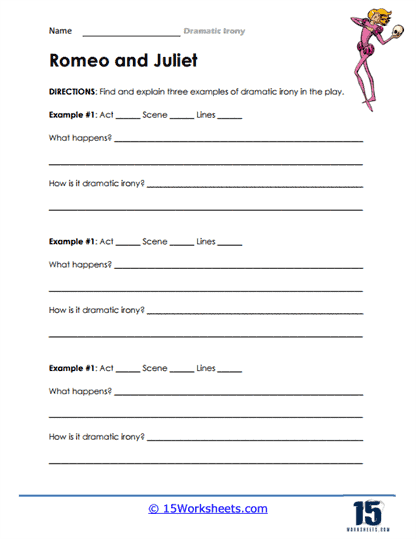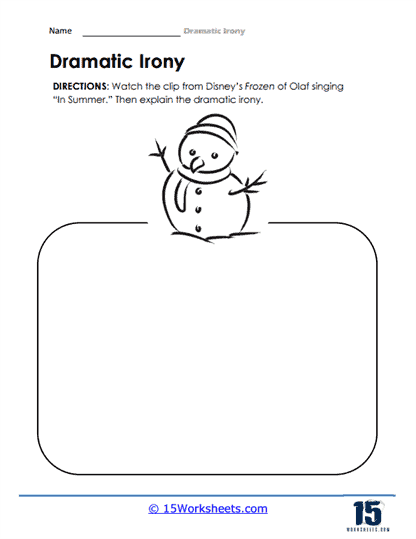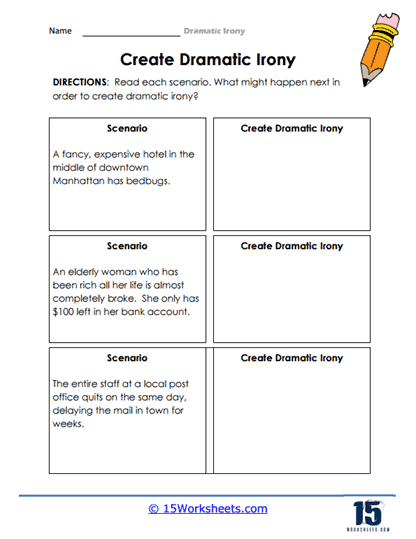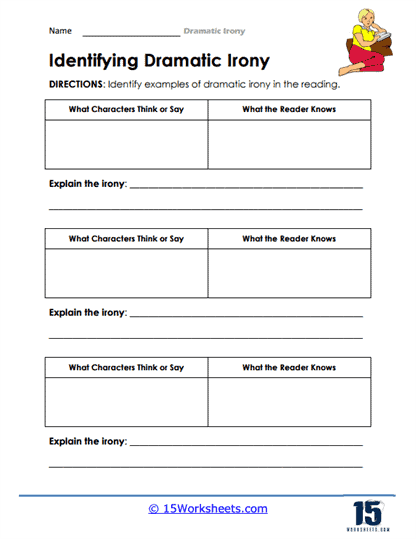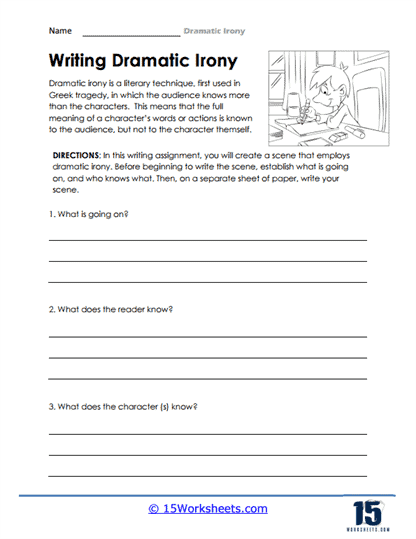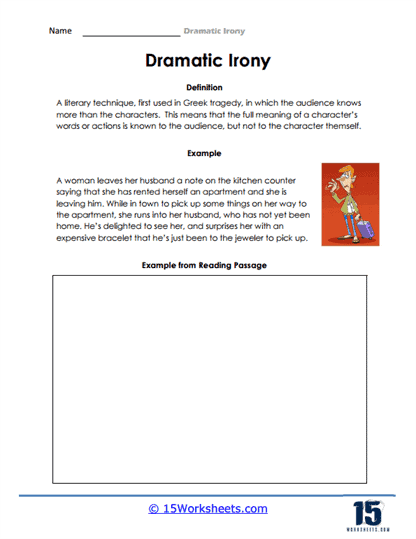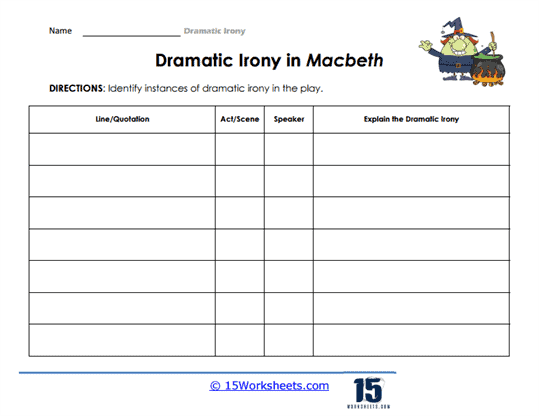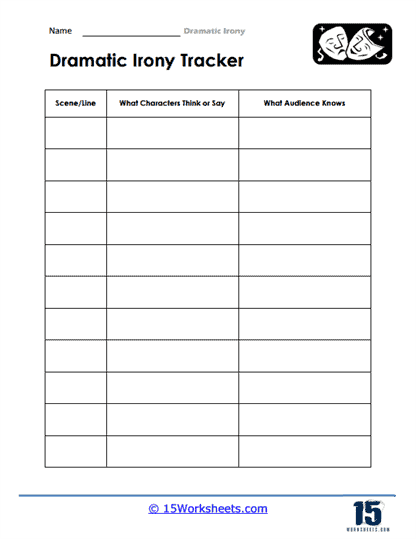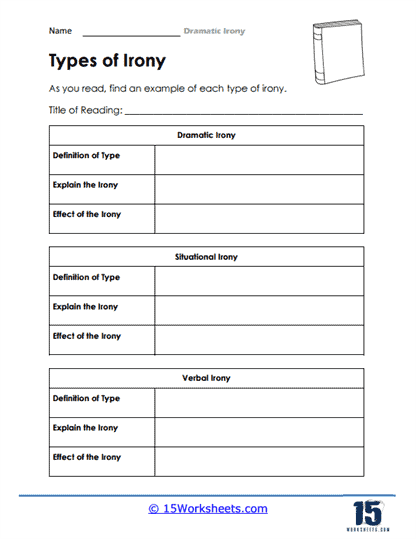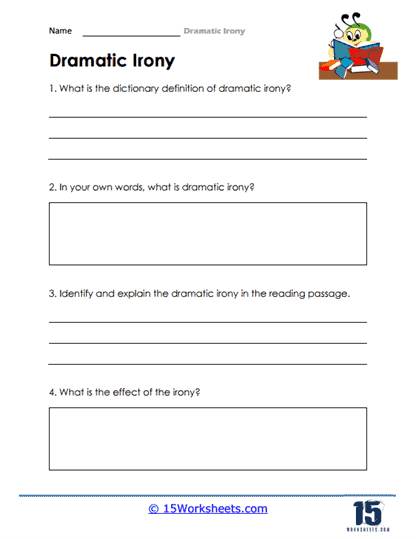Dramatic Irony Worksheets
About These 15 Worksheets
These worksheets will help students to understand and identify dramatic irony in literature. Dramatic irony is a literary technique where the audience or readers have knowledge or information that the characters in a story do not possess. It creates a sense of tension, suspense, or humor as the audience knows something that the characters are unaware of.
To explain dramatic irony, let’s look at an example – Imagine you’re watching a movie where the main character is about to open a door, unaware that there’s a surprise party waiting for them on the other side. You, as the viewer, know about the surprise party, but the character does not. That difference in knowledge creates dramatic irony.
Dramatic irony worksheets provide exercises and activities that help you recognize and analyze instances of dramatic irony in texts. These worksheets typically contain passages, scenes, or dialogues where you have to identify situations where the audience or readers possess information that the characters do not.
By working on dramatic irony worksheets, you can:
Identification – These worksheets help you develop the skill of recognizing dramatic irony in literature. By reading passages or scenes, you learn to identify situations where the audience or readers have knowledge that the characters do not. This skill allows you to identify instances where the story creates tension or suspense through this technique.
Understand Contrasts in Knowledge – Dramatic irony worksheets allow you to analyze the contrast in knowledge between the audience or readers and the characters. You explore how this difference in information adds depth to the story, creates anticipation, or influences your emotional response. By understanding dramatic irony, you gain insight into the techniques authors use to engage and captivate their readers.
Enhance Reading Comprehension – Developing the skill to identify and understand dramatic irony enhances your overall reading comprehension. Dramatic irony often reveals important information, creates plot twists, or builds suspense. By successfully recognizing dramatic irony, you deepen your understanding of the story and engage more fully with the narrative.
Appreciate Narrative Techniques – Dramatic irony worksheets foster an appreciation for the narrative techniques used by authors. By recognizing instances of dramatic irony, you gain insight into how authors strategically reveal information and manipulate the reader’s experience. This awareness helps you appreciate and analyze the storytelling techniques employed in literature.
Explore Emotional Impact – Dramatic irony can evoke a range of emotions, such as anticipation, suspense, or even humor. By working on dramatic irony worksheets, you can explore how the contrast in knowledge affects your emotional response to the story. This understanding allows you to appreciate the emotional impact of dramatic irony in literature.
Why Do Authors Use This Technique?
Authors use dramatic irony as a form of figurative language in literature for several reasons:
Heightened Tension and Suspense – Dramatic irony creates a sense of heightened tension and suspense in the narrative. By providing the audience or readers with knowledge that the characters lack, a gap is created between what the characters believe and what the audience knows to be true. This generates anticipation and engages the readers, as they eagerly anticipate the moment when the characters will discover the truth.
Enhancing Plot Development – Dramatic irony allows authors to develop the plot in intriguing ways. By having the audience or readers possess information that the characters do not, the author can introduce unexpected twists, complications, or conflicts. This drives the narrative forward and keeps the readers engaged as they observe how the characters’ actions and decisions are influenced by their lack of knowledge.
Character Exploration – Dramatic irony provides an opportunity for authors to delve into the inner workings of characters. As readers are privy to information unknown to the characters, they gain insight into the motivations, desires, and conflicts that drive their actions. This deeper understanding of the characters’ thoughts and intentions adds complexity and depth to their portrayal, enabling readers to form a more profound connection with them.
Emotional Impact – Dramatic irony can evoke strong emotions in readers. The knowledge of impending danger, the irony of misunderstandings, or the anticipation of imminent revelations can create a powerful emotional response. This emotional engagement adds richness and depth to the reading experience, allowing readers to feel a heightened sense of empathy, concern, or excitement for the characters and their predicaments.
Commentary on Human Nature – Dramatic irony can serve as a commentary on human nature or the human condition. By exposing the gap between what characters believe to be true and what the readers know, authors highlight the fallibility of human perception and the complexities of human interactions. This exploration prompts readers to reflect on the nature of truth, communication, and the limitations of human understanding.
Comic Effect – Dramatic irony can also be used to create comedic moments. When readers are aware of humorous situations or misunderstandings that the characters are oblivious to, it can generate comedic irony. This type of dramatic irony adds humor and lightheartedness to the story, providing a contrast to more serious or intense moments.


